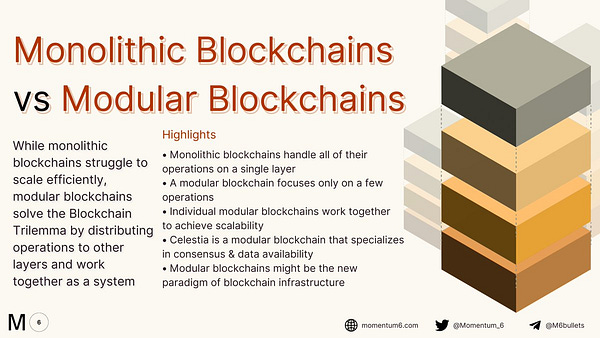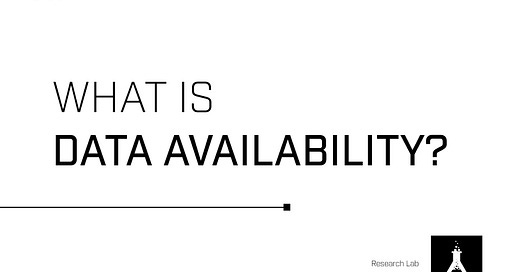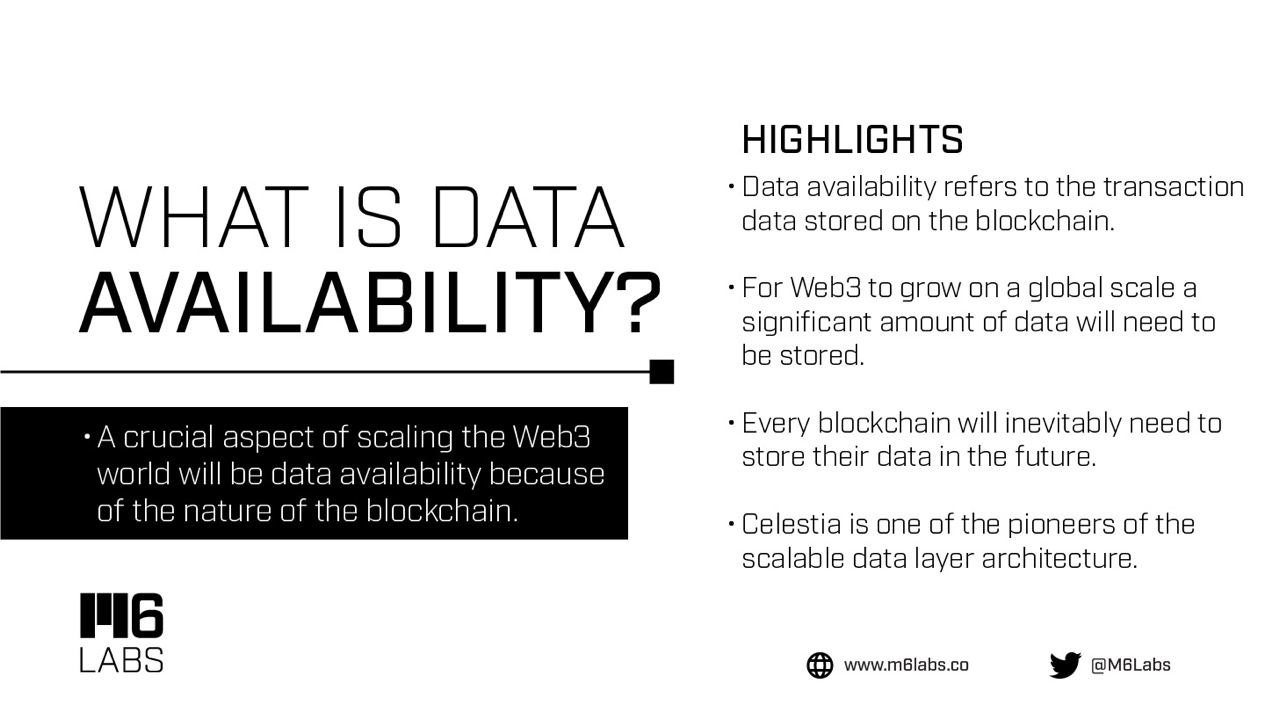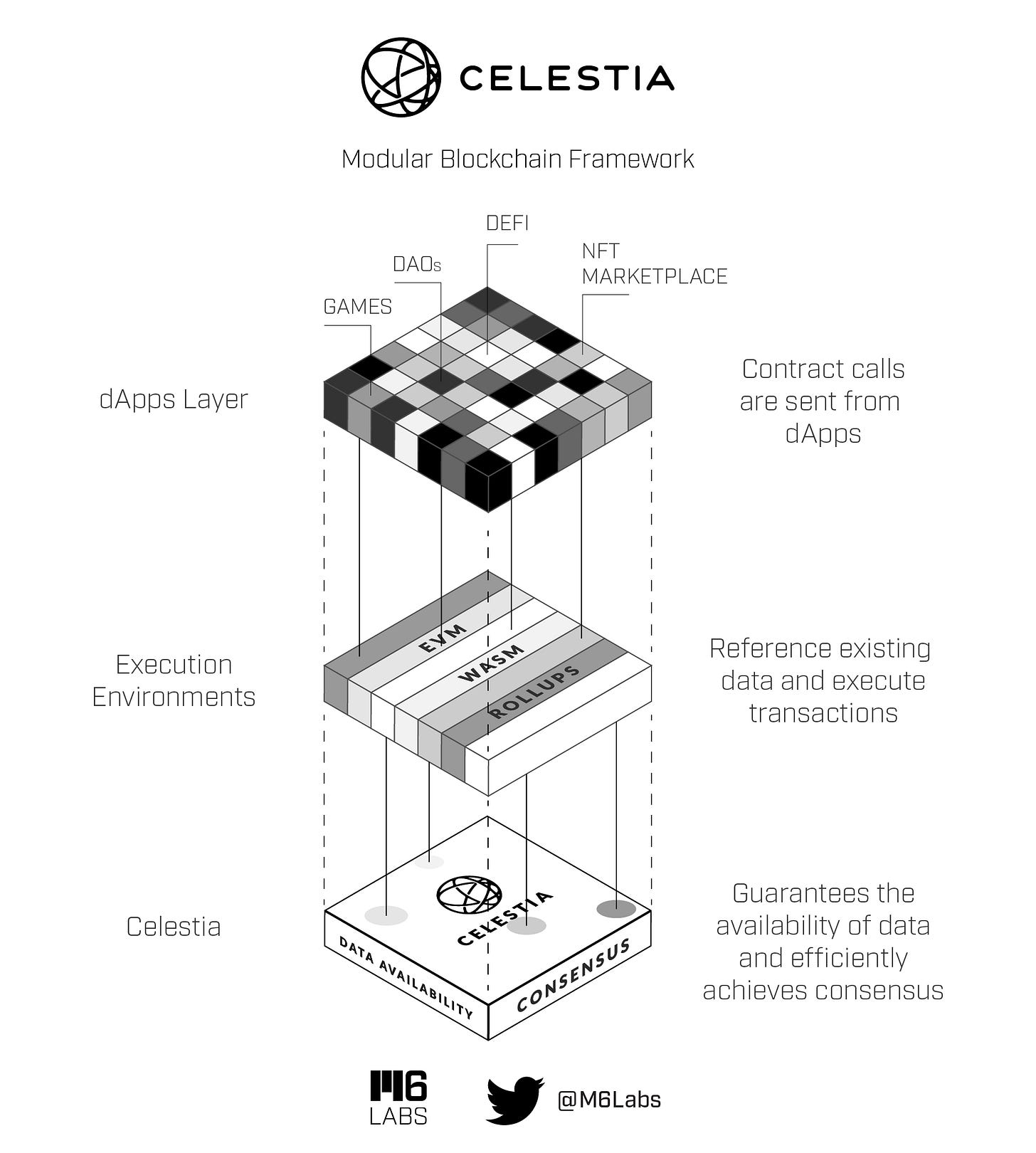What is Data Availability?
We break down what it is and why it matters to you and the greater crypto ecosystem
What happens when blockchains begin to scale? You run into the problem of Data Availability (DA). We break down what it is and how @CelestiaOrg is innovating the scalable data layer architecture.
TL;DR: Why should DA matter to you?
It comes down to cost - transaction fees can get high during high-use periods. With chains becoming increasingly developed in the past several years, scaling has become a critical priority for networks buckling under increasing transaction volume.
Before we get started... Want early access to our research threads? Sign up to our Substack to receive daily coverage on everything you need to know about going on in the crypto directly in your inbox:
Done? Now let's dive in!
A popular solution that has been proposed is to separate program execution from the Layer 1 consensus mechanism, by offloading the former to off-chain operators. Data availability guarantees that anyone can view and download the published data at all times.
Monolithic blockchains by design are unable to meet the demands of the crypto economy. As a result, blockchain architecture is gradually evolving to meet demand and satisfy user needs at a low cost per transaction.
Blockspace on monolithic chains has become very expensive due to the high demand. It has also become difficult for nodes to participate in the chain without a powerful machine. This has resulted in node centralization, weakening the chain's security.
The main problem is SCALABILITY. Monolithic chains are finding it difficult to scale without sacrificing security or decentralization. This problem is famously known as the BLOCKCHAIN TRILEMMA.
Functions of a blockchain:
Consensus – an agreement over the transactions
Data Availability – transaction data stored on the blockchain
Execution – executing the posted transactions
Settlement – verifying proofs & coordinating cross-chain asset transfers
A monolithic blockchain performs all the functions on its own. Modular blockchains, on the other hand, create a new paradigm of blockchain architecture by distributing individual blockchain functionalities to independent layers that work together as a system.
A significant amount of data will need to be stored on the blockchain for crypto to grow on a global scale. Due to the blockchain's immutability feature, data will also accumulate on the blockchain as more and more transactions are executed on the network.
As a result, every blockchain will inevitably need to have efficient ways of storing its data (DATA AVAILABILITY) in the future. The demand for transaction data to be stored permanently will increase exponentially as Web 3 gets adopted around the world.
Modular blockchain architecture allows a much higher throughput of data availability by separating data availability from other blockchain operations. By separating these functions, one can easily build applications that are much more data-heavy like rollups.
Thus, a crucial aspect of scaling the crypto world will be data availability. Celestia is one of the pioneers of the modular blockchain architecture. They provide Data Availability and Consensus layers within the modular stack.
Celestia serves as a scalable data layer for other modular layers. The network capacity and the amount of data that is made available scales with the network's growth. Celestia can manage increased demand for blockspace by being highly parallelizable.
It splits each block into sections to perform operations on different columns & rows of that block simultaneously. They call this Internal Sharding. With its scalable data availability layer, Celestia offers an ideal solution to current scalability and gas fee problems.
Wanna know more about Celestia?
Check out our other thread comparing Celestia to Monolithic Blockchains


Progress in Web 3 is frequently accompanied by developments in data storage. Therefore, in order to achieve a better TPS with low gas fees, we will need efficient data availability methods.
Thankfully there are plenty of gigabrained teams and developers out there working at solving this problem and cracking the Blockchain Trilemma.
Subscribe to receive our daily brief, extended weekly newsletter, and in-house research content!
Please Share, Leave Feedback, and Follow Us on Twitter, Telegram, and LinkedIn to stay connected with us.









